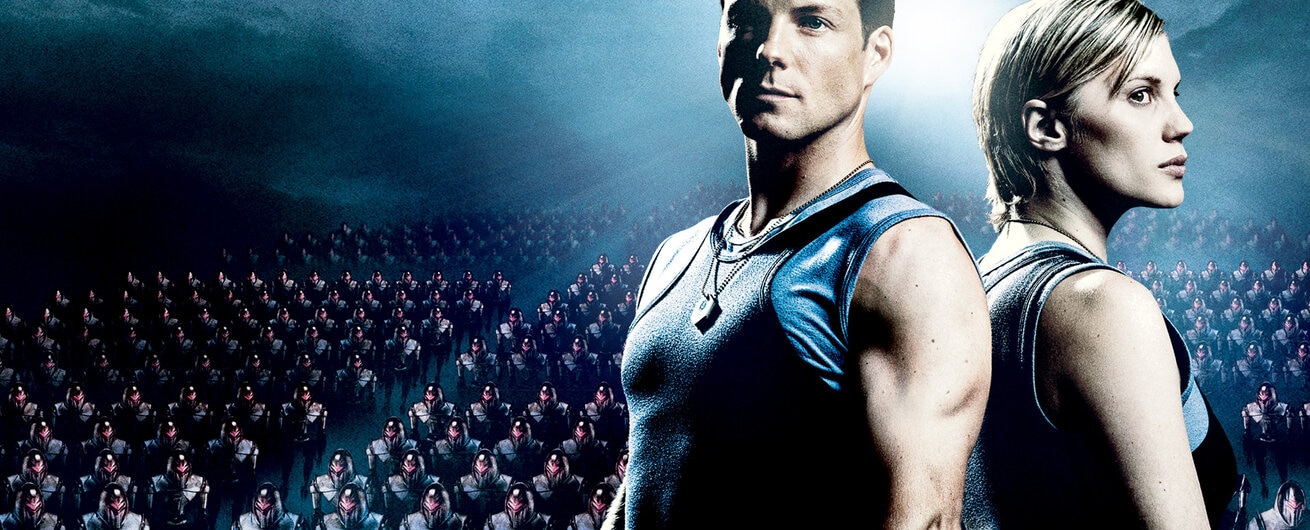Create a free profile to get unlimited access to exclusive videos, sweepstakes, and more!
Star in Pinwheel Galaxy Just Went Supernova, and You Can See It with Binoculars
With a little help from your tech.

Astronomers have confirmed the presence of a new light in the night sky, thanks to a supernova explosion in the nearby Pinwheel Galaxy. While the burst of light is brighter than just about anything else in its galaxy at the moment, it’s still too dim to see without a little technological assistance. What else is new?
When Alex Murphy was fatally injured, a team of doctors, scientists, and engineers rebuilt him, with upgrades, into RoboCop. On paper, he may have been better than before, but he longed for a humanity he felt he had lost. Battlestar Galactica’s John Cavil (Dean Stockwell), by contrast, was a Cylon trapped inside the body of a human, something which caused him considerable discomfort. In the Season 4 episode “No Exit” (which you can watch along with all the show's other episodes on Peacock!), Cavil says as much when he asks Ellen (Kate Vernon) if she’s ever seen a supernova. She hasn’t, but he has.
“I saw a star explode and send out the building blocks of the universe, other stars, other planets, and eventually other life, a supernova, creation itself. I was there. I wanted to see it and be part of the moment. And you know how I perceived one of the most glorious events in the universe? With these ridiculous gelatinous orbs in my skull. With eyes designed to perceive only a tiny fraction of the EM spectrum, with ears designed only to hear vibrations in the air.”
RELATED: Where Is The ‘Battlestar Galactica’ Cast Now? Edward James Olmos, Katee Sackhoff & More
It isn’t nice, but he isn’t wrong. If you’re going to build a person from scratch, there are a few adjustments we could think of making. His creators, however, wanted him to be as human as possible. He knows that and he hates it.
“I don’t want to be human. I want to see gamma rays, I want to hear X-rays, and I want to smell dark matter. Do you see the absurdity of what I am? I can’t even express these things properly, because I have to conceptualize complex ideas in this stupid, limiting spoken language, but I know I want to reach out with something other than these prehensile paws, and feel the solar wind of a supernova flowing over me. I’m a machine, and I can know much more, I could experience so much more, but I’m trapped in this absurd body.”
We get it, John. We too are limited in what we can perceive with our natural senses. The universe is large, maybe even infinite, but our natural window to it is narrow and hard to make out. Fresh out of the box, a human has a seemingly innate sense of wonder, but few other tools. Our eyes and ears aren’t particularly good. We can’t really see things which are very small or very far away and there are entire parts of the electromagnetic spectrum we can’t perceive even when we’re looking right at them. But we’re pretty good at making tools and, with the help of technology, we can see things which would otherwise remain hidden.
A NEW SUPERNOVA IN THE PINWHEEL GALAXY
Our latest opportunity to witness a supernova occurred in the Pinwheel Galaxy, which gets its name from its spiral shape and the fact that we’re looking at it pretty much face on. Instead of a narrow band of stars in the distance, we can view the Pinwheel Galaxy (Messier 101) as if looking down on it from above.
On May 19, astronomer Koichi Itagaki was doing just that when he spotted a brilliant burst of light from a star inside the galaxy, roughly 21 million light-years away. The galactic spotlight is the result of a Type II supernova, which occurs when a star between 8 and 40 times the mass of the Sun runs out of fusible fuel and rapidly collapses. At 21 million light-years, this is the closest supernova we have observed since SN 2014J, in 2014.
Itagaki’s discovery was confirmed the day after the first observation, in automated images from the Zwicky Transient Facility (ZTF) in California. The new supernova has been designated SN 2023ixf by the International Astronomical Union (IAU). While astronomers using professional equipment were the first to witness this latest supernova, there’s no reason they should be the only ones to get in on the fun.
HOW TO SEE THE SUPERNOVA FOR YOURSELF
Stars (and other celestial objects) can be categorized in a number of ways. Often, astronomers talk about things in terms of their true luminosity, but objects can also be grouped by their apparent brightness from our perspective here on Earth.
Sirius, the brightest star in the sky, has a stellar magnitude of -1.33. If you’re confused, you’re not alone. The stellar magnitude scale plays out in reverse, so the lower the number the brighter it is. It’s like golf, or student debt. Other bright stars like Vega, have a magnitude of 1 and the numbers keep climbing as the stars in the sky get dimmer. On a dark night with clear skies and no light pollution, you might be able to see stars as dim as magnitude 7. Beyond that, you’re going to need some technological assistance.
At the time of its discovery, SN 2023ixf had a magnitude of 14.9, but it has grown quite a bit brighter over the last couple of days. As of May 22, it had a magnitude of 12.46 and it's still growing brighter. The supernova is expected to continue brightening over the next few days and remain visible for several months. While it’s unlikely that SN 2023ixf will get bright enough to be visible to the naked eye, you can see it with a small backyard telescope or a good pair of binoculars.
You can find the Pinwheel Galaxy in the constellation Ursa Major, commonly called the Big Dipper. Once you’ve located it, look for the two bright stars (Alkaid and Mizar) at the end of its handle. Using those stars as the base of an equilateral triangle will point to M101. Put another way, find the Big Dipper, position your telescope or binoculars between the two leftmost stars and hop up from there to M101. You may only have gelatinous orbs in your skull, but you can still feel the solar wind of a supernova flowing over you, even if only metaphorically.
Catch Battlestar Galactica, streaming now on Peacock!




























